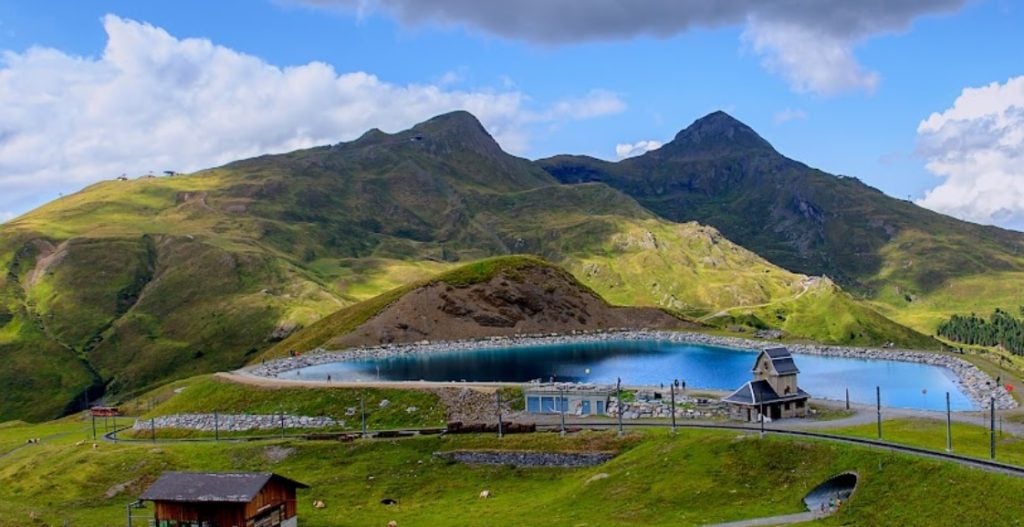Coldest Point in Europe: Jungfrau Mountain
The Jungfrau Mountain is a famous mountain located in the Bernese Alps of Switzerland. Meaning ‘Maiden’ in English, the Jungfrau Mountain stands at an elevation of 4158 meters, making it the third-highest peak in the Bernese Alps. In 2001, the Jungfrau Mountain and the Jungfrau-Aletsch-Bietschhorn region on its southern border were designated as a UNESCO World Heritage Site.
It forms a trio with the Eiger and Mönch Mountains, and the region is considered one of the world’s outstanding universal values, encompassing Europe’s largest glacier mass. With shrinking glacier masses due to global warming, it hosts various ecosystems, including successive stages. The Jungfrau region not only boasts beauty but also holds a wealth of geological knowledge about glacier formation.
The first ascent to the summit took place on August 3, 1811, by the Meyer brothers from Aarau and two hunters from Valais. The climb was an extensive exploration journey involving glaciers and high passes of the Bernese Alps.
In the early 20th century, the Jungfrau Railway was opened, connecting Kleine Scheidegg to the Jungfraujoch glacier saddle. This made the region one of the most visited places in the Alps.
Activities in the Jungfrau Region
The Jungfrau region is one of the prominent tourist attractions in the Bernese Alps, frequented by many due to its extensive railway and other facilities. The journey to Jungfraujoch via the Jungfrau Railway offers breathtaking views and is a popular route for both domestic and international tourists.
The Jungfrau Mountain is also used for mountaineering, with a route known as the old route starting from the Mönchsjoch Hut, leading through Jungfraufirn, Rottasattel, and finally reaching the southern ridge of Jungfrau. While the 3885-meter route does not host a highly challenging climb, accidents have occurred in the past, particularly in the upper sections of Rottalsattel, which are considered dangerous by climbers.
Located 600 meters from the Jungfrau Mountain’s glacier saddle, the Sphinx Observatory offers a unique mountain panorama from its viewing terrace and is used for scientific research, drawing interest from visitors.
Another activity in the Jungfrau region is skiing or sledding. During the ski season, the Jungfrau Mountain welcomes guests with restaurants, shops, and souvenir stores at its summit. With numerous ski and sledding slopes, it provides visitors with the opportunity for an unforgettable winter vacation.
The Jungfrau is a natural beauty open 24 hours a day, every day of the week. Train schedules may vary depending on how visitors choose to access it, whether by climbing or taking the railway.
For mountain climbing, it is recommended to dress appropriately for mountaineering and travel in groups for safety reasons.
Activities such as skiing, shopping, and dining are subject to different pricing and may have varying access hours at different locations
Excellent photos and map for the Jungfrau Mountain, the Coldest Point in Europe
El Capitan Mountain Dawn Wall: The world’s hardest rock climbing

